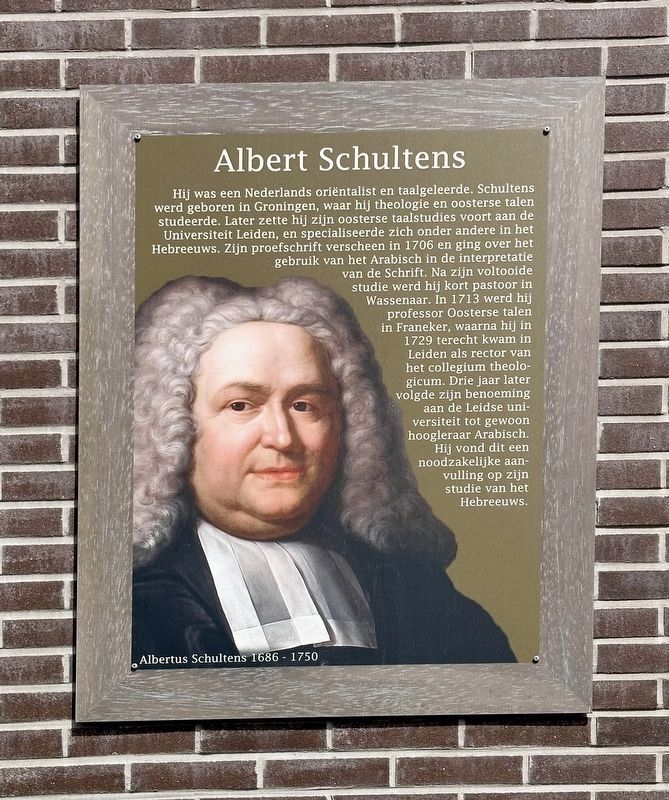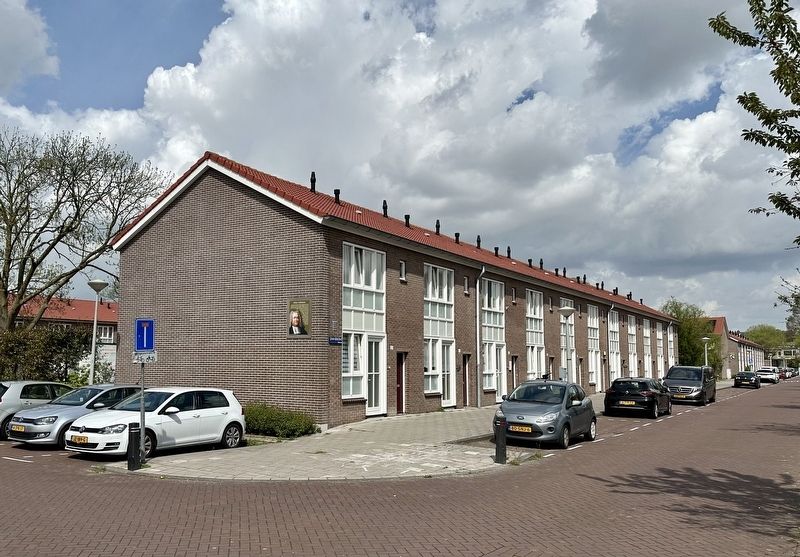Amsterdam Nieuw-West , North Holland, Netherlands — Northwestern Europe
Albert Schultens
Albertus Schultens 1686 - 1750
Hij was een Nederlands orientalist en taalgeleerde. Schultens werd geboren in Groningen, waar hij theologie en oosterse talen studeerde. Later zette hij zijn oosterse taalstudies voort aan de Universiteit Leiden, en specialiseerde zich onder andere in het Hebreeuws. Zijn proefschrift verscheen in 1706 en ging over het gebruik van het Arabisch in de interpretatie van de Schrift. Na zijn voltooide studie werd hij kort pastoor in Wassenaar. In 1713 werd hij professor Oosterse talen in Franeker, waarna hij in 1729 terecht kwam in Leiden als rector van het collegium theologicum. Drie jaar later volgde zijn benoeming aan de Leidse universiteit tot gewoon hoogleraar Arabisch. Hij vond dit een noodzakelijke aanvulling op zijn studie van het Hebreeuws.
He was a Dutch orientalist and linguist. Schultens was born in Groningen, where he studied theology and oriental languages. He later continued his oriental language studies at Leiden University, specializing in Hebrew, among other things. His dissertation appeared in 1706 and dealt with the use of Arabic in the interpretation of Scripture. After completing his studies, he briefly became a pastor in Wassenaar. In 1713 he became professor of Eastern languages at Franeker, after which he ended up in Leiden in 1729 as rector of the collegium theologicum. Three years later he was appointed full professor of Arabic at Leiden University. He found this a necessary addition to his study of Hebrew.
Erected by Geef Straten Een Gezicht.
Topics and series. This historical marker is listed in this topic list: Arts, Letters, Music. In addition, it is included in the Give Streets a Face / Geef Straten Een Gezicht series list. A significant historical year for this entry is 1686.
Location. 52° 21.633′ N, 4° 49.703′ E. Marker is in Amsterdam, Noord-Holland (North Holland). It is in Amsterdam Nieuw-West. Marker is at the intersection of Albert Schultenshof and Johan Kernstraat, on the right when traveling west on Albert Schultenshof. Touch for map. Marker is at or near this postal address: Johan Kernstraat 22, Amsterdam, Noord-Holland 1065 TW, Netherlands. Touch for directions.
Other nearby markers. At least 8 other markers are within walking distance of this marker. Johan Hendrik Kern (a few steps from this marker); Reinhart Dozy (about 120 meters away, measured in a direct line); Thomas van Erpe (about 120 meters away); Willem Moll (about 180 meters away); Cornelis van Alkemade (about 210 meters away); Pieter Bor (about 210 meters away); Petrus Johannes Blok (approx. 0.3 kilometers away); Anthony Winkler Prins (approx. 0.3 kilometers away). Touch for a list and map of all markers in Amsterdam.
Also see . . . Albert Schultens (Wikipedia).
Excerpt: Albert Schultens ( 1686 – 26 January 1750) was a Dutch philologist… Schultens was the chief teacher of the Arabic language in the whole of the Europe during his lifetime. In some sense, he revived Arabic studies. He differed from J. J. Reiske and Silvestre de Sacy in regarding Arabic as a handmaid to Hebrew. Reiske considered Schultens' treatment of Arabic to be of little value, also maintaining that Arabic studies should not be taught as part of theology, but as a subject matter in its own right, as was mathematics, physics, geography and medicine. Schultens vindicated the value of comparative study of the Semitic tongues against those who, like Jacques Gousset, regarded Hebrew as a sacred tongue with which comparative philology has nothing to do.(Submitted on May 27, 2023.)
Credits. This page was last revised on December 31, 2023. It was originally submitted on May 27, 2023, by Andrew Ruppenstein of Lamorinda, California. This page has been viewed 59 times since then and 8 times this year. Photos: 1, 2. submitted on May 27, 2023, by Andrew Ruppenstein of Lamorinda, California.

